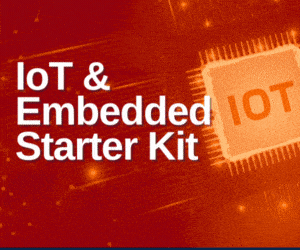With India being considered as a hot-bed for research on pure technical aspects viz. the Internet of Things (IoT), and ‘smart technology’ as Machine Learning (ML), Artificial Intelligence (AI), and more, there is hope amongst the engineering and research community that the inherent issues plaguing the country’s citizens can be solved dynamically at the initial level. Solving of problems here refers to elimination of manual intervention that is well known and documented as a major issue.
With respect to research in IoT and smart concepts in India, one field that the smart technology needs application is the agriculture and farming domains. These sectors, have for ages been dominated by manual bureaucracies that have resulted in farmers (more so the marginal farmers) not being able to secure the right prices for their produce, as fixed by the government.
IoT in tandem with Internet-driven smart concepts will technically transform farmers
“IoT is helpful in instantaneous collection of detailed data. The tracking of quantity, quality, time and price at various points of exchanges will help us to focus on areas of improvement,” states Dr Regi Mathew – vice-president of predictive analytics at CleverInsight; a firm that is focussed on leveraging the Internet of Things for application across various sectors to transform businesses across the world.
Dr Regi believes that with the right IoT-driven data collection mechanism, engineers and IoT service providers can make an enormous difference to farmers (and the agricultural sector as a whole) in actually monitoring the amount of produce that enters a wholesale retailer.

Now, remember that most farmers still prefer choosing middlemen (and agents) to find channels for selling their produce. This leads to a scenario wherein agents become price fixers and buy farmers’ produce for prices that are generally way below the market rates. Often, agents and middlemen quote insufficient supply of produce (along with citing inferior quality of supply) and create an artificial scarcity situation with respect to both quality and quantity which leads to farmers losing out on profits.
Creativity of embedded engineers and IoT service provider comes into picture here, with respect to developing sensors that can monitor the amount of produce along with the quality of the supply when these enter a wholesale trader. Here, farmers should be offered technical insights in an understandable manner such that they are smart enough to gauge the end-results (in terms of quality of their produce) and directly deliver these to a wholesale retailer.
Farmers can be offered insights via mobile apps, and even text messages; after analytics is run based on the data collected by sensors. Even wholesale traders can be directly connected with farmers after the former gets to view the analysed agricultural data (could be organised based on location as well) and reverts with the current market prices; thereby eliminating middlemen from the picture altogether.
Big Data is a ‘big’ advantage for farmers; data scientists take note
“Agriculture production and distribution is an ideal case of application of Big Data technology,” adds Dr Regi. This means that technologists should work on presenting the agriculturists with dashboards that are capable of tracking even the minutest of aspects such as transportation costs from place A to place B.
Even demand prediction is an important advantage of having big data and analytics over raw agriculture data.
“With Big Data applied, farmers can adjust their harvest based on upcoming demand. They can decide to sell immediately, store it or preserve it in case of perishable products; if right information can be provided. If long term forecasts are available, planting decisions can be made based on this,” advices Dr Regi.
In summary, with big data and analytics, farmers are technically empowered with the right knowledge to find easy and legal selling channels offering best prices for their generated produce.
“During the times of actual produce scarcity, price goes up and farmers switch crops. This will lead to abundance in the next cycle and price crash. This cycle repeats and farmers go from one crisis to other. Such situations can be avoided if intelligence can be shared with farmers in advance. The role of data analytics and big data is invaluable here.”
Smart Marketplace models are the easiest to develop and deploy
Data scientists and IoT researchers also believe that the easiest among solutions is the deployment of smart marketplace models wherein farmers are constantly e-connected with companies interested in purchasing agricultural produce.
The biggest advantage of such a scenario is the fact that prevailing market prices are communicated dynamically to farmers via big data and analytics as soon as the conversation is initiated. This information is prevalent on aspect such as the geographical location of the farm in which the produce is harvested, the fertility of the farm, prevalent weather conditions at the time of farming, and water sources.
These data sets are made available to farmers easily through a mobile application. Farmers are also at authority to verify this ‘analysed’ data with governmental authorities. This eliminates the need of middlemen as exact prices are computed smartly.
“For example, GreenAgtech provides a platform to sell the harvest to HORECA (hotels, restaurants, cafe segment), who can place order via the app. After the purchase order is placed, the company supplies fruits and vegetables to the order placer. The best part about such a platform is farmers can get best prices without facing time delays,” states Swetha Gaded who is business analyst at Bengaluru-based Inventrom (developers and deployers of Bolt Garo-IoT solution).

This aspect is seconded by a seasoned technology professional (who offered insights on the condition of anonymity) who feels that it would be the IoT researchers who get to benefit the most, apart from the agriculturist community, with easily implementable IoT-driven agricultural solutions.
“Hire engineers by the lot to work for your Agro-IoT startups. Implement sensors at the soil-level. These sensors send data which help in determining a farmer’s future. Vital aspects such as soil quality, the moisture level, along with the temperature needs to be analysed through analytics and big data; offer these as customised dashboards to farmers through text messages,” advises this IoT- professional to startups.
Transforming existing markets themselves, into smart markets
Though at a nascent stage, solutions here are completely practical, feel embedded engineers.
“Having IoT-devices at marketplaces is not an uncommon technology, it has seen the light of the day in several western economies,” was the general sentiment echoed by multiple embedded systems engineers working at IoT-startups in Bengaluru.
However, there are hitches here. Geographical reachability and connectivity is still in its infancy in Indian economies. Marketplaces and fair-price shops are generally located at an average distance of 50-100 kilometres from the farms where produce is harvested. Farmers, from whom travel is difficult, still choose middlemen to sell produce.
Nonetheless, there is still light at the end of the tunnel as innovative startups such as Pune-based Ecozen who have developed an IoT-driven solar-powered cold storage units that is accessible even to small and marginal farmers.
In the same way, Tamil Nadu-based Nimble Wireless also offers IoT-driven solutions for cold-chains for both the food as well as pharma sectors.
Therefore, it is not an exaggeration when experts express large-scale optimism about IoT-driven physical solutions for agricultural asset monitoring.
“By putting IoT machines where a person can push a button to send an alert to his farm for a refill, middlemen can definitely be eliminated. The onus is now on the IoT service providers and embedded engineers to design and deploy such smart market devices,” adds Swetha.
For farmers, there are direct open source tools to eliminate middlemen now
At this point in time, it is worth noting that there are open source platforms that directly connect farmers with traders. So, if you are an engineer intending to start farming on your ancestral land or simply a farmer, check out the below open source platforms:
- e-NAM : An online portal, developed by the Government of India, for trading in agriculture produce, which promises to liberate farmers from the clutches of middle-men and realise fair market value for their yields.
- ConnectFarmer: ConnectFarmer offers a common platform for processed farm products and enable these to be sold directly to end users.
- MKisan: Yet another buyer-seller platform created by the government of India, MKisan enables farmers connect directly with buyers. Buyers register on this platform and choose the area from where they intend to buy the product. They can offer the desired price at which products need to be procured. Farmers of that selected location get a text message on their mobile set. This message contains name and mobile number of all buyers and the price which they are offering to buy a commodity.
The government’s interest level on IoT and smart concepts has seemingly doubled
As of now, with IoT research still developing in India, the government has formed the Centre of Excellence on the Internet of Things along with Nasscom. This is to further research on IoT across a plethora of domains such as smart cities, and smart villages. IoT experts hope that agro-IoT would be given its due here.
“I am sure they are certainly taking necessary steps in the direction of making agriculture technologies advanced and thereby focused on making the life of farmers easier,” adds Ravi Gupta, business analyst at Inventrom.
‘Other’ Agro-IoT solutions by private players increase hope for farmers and engineers
Budding IoT and embedded engineers (and technologists) should remember that Agro-IoT solutions have already deployed at the ground level. A classic example here is the Inventrom Bolt that are designed to effectively solve the farmers’ crop failure issues by helping farmers with site-specific nutrient management with the help of sensors and environment for crop growth involving storage mapping, and soil quality checking,
Inventrom’s Bolt has been deployed at the ground level by clients who have used the solution for a wide variety of uses including farmer profiling, crop monitoring, soil weather monitoring, and more.
“Bolt can solve loss due to crop failure and for enriching farmer’s produce selling, an efficient online market place and supply chain management is an optimal solution,” signs-off Swetha.
At EFY, we have covered Bolt along with use-cases. Click here to navigate to the article now.
Major contributors to the story
| Swetha Gaded | Business Analyst at Bengaluru-based Inventrom; a firm that is focussed on leveraging the Internet of Things for application across various sectors to transform businesses across the world |
| Dr Regi Mathew | Vice President of Predictive Analytics at CleverInsight |
| Ravi Gupta | Business Analyst at Inventrom |
| Experienced Embedded engineers, and IoT-solution providers based in Bengaluru | |
Written by Rahul R, Senior Technical Journalist at EFY








